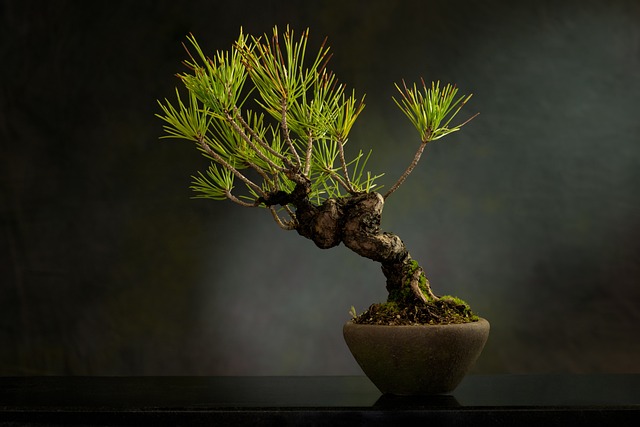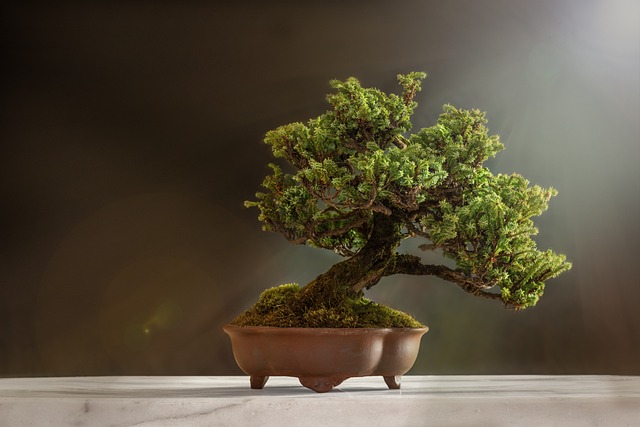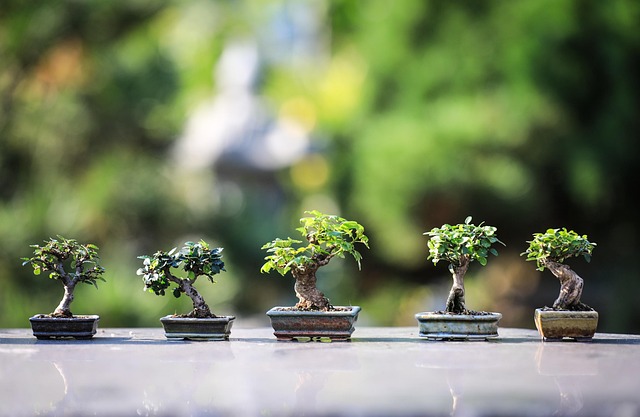Spring marks a crucial period for bonsai enthusiasts worldwide. As nature awakens from winter dormancy, bonsai trees enter their most active growth phase, requiring special attention and care. This comprehensive guide draws on centuries-old Japanese techniques to help you nurture your bonsai during this vital season. Whether you’re a beginner or experienced practitioner, these authentic methods from the birthplace of bonsai will help your miniature trees thrive and flourish through spring and beyond.
- Understanding the Spring Awakening of Bonsai Trees
- Essential Spring Bonsai Care Techniques
- Repotting Your Bonsai in Spring
- Training and Shaping in Spring
- Common Spring Bonsai Problems and Solutions
- Indoor vs. Outdoor Bonsai in Spring
- Bonsai Flowering and Color Changes
- The Cultural Significance of Bonsai in Japan
- Summary
Understanding the Spring Awakening of Bonsai Trees

Why Spring is Crucial for Bonsai Development
Spring represents the most critical period in the bonsai growing cycle. During this time, trees emerge from dormancy and begin channeling stored energy into new growth. The decisions you make during these few months will influence your bonsai’s development for the entire year.
In Japan, spring is considered the foundation season for bonsai cultivation. Master bonsai artists often say, “A successful spring leads to a beautiful bonsai.” This is because spring growth establishes the framework for summer development, autumn hardening, and winter survival.
Key physiological changes occurring in your bonsai during spring include:
- Activation of dormant buds
- Increased sap flow throughout the tree
- Accelerated photosynthesis as daylight hours increase
- Root growth resumption
The Japanese Concept of “Haru-Mezame” (Spring Awakening)
In traditional Japanese bonsai practice, there exists the concept of “Haru-Mezame” (春目覚め), which literally translates to “spring awakening.” This philosophy approaches spring care not as a set of mechanical tasks but as a partnership with nature’s rhythms.
Japanese masters observe their trees daily during early spring, looking for subtle signs that indicate when the tree is ready for specific care procedures. Rather than following a strict calendar, they respond to the tree’s individual needs based on:
- Swelling of buds
- Initial leaf emergence
- Soil temperature changes
- Root activity signs
This responsive approach differs from Western methods that often follow rigid schedules. By adopting Haru-Mezame principles, you’ll develop a deeper connection with your bonsai and better understand its unique requirements.
Essential Spring Bonsai Care Techniques
Proper Watering in Spring
Spring watering requires a careful balance as trees transition from low winter water needs to increased spring demands. As new buds break and leaves develop, water consumption rises significantly.
Should you water bonsai everyday in spring? This depends on several factors, but generally, most bonsai require more frequent watering in spring than in winter. However, daily watering isn’t always necessary and can sometimes be harmful.
Follow these Japanese watering principles for spring:
- Check before watering: Insert your finger about 1cm into the soil. Only water when the surface feels dry.
- Water thoroughly: When watering, ensure water runs freely from the drainage holes.
- Consider the weather: Adjust frequency based on temperature, humidity, and wind conditions.
- Water in the morning: Early watering allows excess moisture to evaporate during the day, reducing fungal disease risk.
A traditional Japanese technique is to water in layers during spring, ensuring deep penetration to encourage downward root growth. First, water lightly to moisten the surface, wait 30 seconds, then water thoroughly until drainage occurs.
Fertilizing Guidelines for Spring Growth
Spring is the ideal time to begin your fertilization regimen as bonsai enter their growth phase. Japanese bonsai masters have developed specific approaches to spring fertilization based on centuries of experience.
How often should I fertilize my bonsai tree in spring? The general guideline is to begin fertilizing when you see the first new leaves developing, typically applying a balanced fertilizer every two weeks. However, different species have varying requirements.
Traditional Japanese fertilization follows this pattern:
- Early spring: Use a fertilizer higher in nitrogen (N) to support leaf and shoot development
- Mid-spring: Transition to a more balanced NPK formula
- Late spring: Slightly reduce fertilizer strength as the initial growth surge stabilizes
| Bonsai Type | Fertilizing Schedule | Recommended NPK Ratio |
|---|---|---|
| Deciduous | Every 2 weeks | 10-6-6 to 12-6-6 |
| Coniferous | Every 3 weeks | 5-5-5 to 6-6-4 |
| Flowering | Every 2 weeks | 6-10-6 |
| Fruiting | Every 2 weeks | 5-10-10 |
Many Japanese practitioners prefer organic fertilizers like fish emulsion or composted cakes (traditionally made from rapeseed or cotton seed). These release nutrients gradually, reducing the risk of root burn while providing micronutrients that support overall tree health.
Pruning and Pinching: The Rule of Three
Spring pruning shapes your bonsai’s growth pattern for the entire year. Japanese masters use a technique called “selective pruning” to direct the tree’s energy to desirable areas.
What is the rule of 3 in bonsai? This traditional Japanese guideline suggests that aesthetic balance is achieved by:
- Creating triangular arrangements within the overall silhouette
- Positioning branches at varying heights (typically in groups of three)
- Ensuring no more than three branches emerge from the same point on the trunk
For spring pruning, follow these Japanese techniques:
- Remove crossed branches: Eliminate any branches that cross each other or grow inward toward the trunk.
- Pinch new growth: Gently pinch off excessive new shoots, allowing only 2-3 buds to develop in desired locations.
- Maintain proportion: Prune more aggressively at the top of the tree and more conservatively at the bottom.
Japanese masters use spring pruning not just to maintain size but to create negative space (間, “ma”) within the tree’s structure. This space is as important as the branches themselves in creating visual harmony.
Repotting Your Bonsai in Spring

When is the Right Time to Repot?
Repotting is one of the most critical spring procedures for bonsai health. In Japan, the timing is considered essential—too early and cold weather might damage roots; too late and you’ll stress the tree during peak growth.
The ideal time to repot most bonsai is just as buds begin to swell but before they open. This usually occurs in early to mid-spring, but varies by species and climate.
Signs that indicate your bonsai needs repotting include:
- Water draining more slowly than usual
- Roots circling around the pot’s edge or emerging from drainage holes
- Reduced vigor despite proper care
- The tree becoming unstable in its pot
Most deciduous trees benefit from repotting every 2-3 years, while conifers typically need repotting every 4-5 years. Younger trees require more frequent repotting than mature specimens.
Japanese Soil Mixture Secrets
The soil composition is perhaps where Japanese bonsai techniques differ most significantly from Western approaches. Traditional Japanese soil mixtures prioritize drainage while maintaining adequate water retention.
The foundation of Japanese bonsai soil is Akadama (赤玉土), a naturally occurring clay-like mineral that provides ideal properties for root development. For spring repotting, Japanese masters often use different soil compositions based on the tree type:
| Tree Type | Akadama | Pumice | Lava Rock | Organic Compost |
|---|---|---|---|---|
| Deciduous | 60% | 20% | 10% | 10% |
| Coniferous | 40% | 30% | 30% | 0% |
| Tropical | 50% | 20% | 10% | 20% |
The key insight from Japanese soil philosophy is that proper drainage prevents root rot while providing enough water retention to support spring growth. Using particles of similar size (typically 2-5mm) ensures consistent drainage throughout the pot.
Step-by-Step Repotting Process
Japanese bonsai masters approach repotting with methodical precision. Here’s their traditional process:
- Prepare all materials before removing the tree from its current pot
- Gently remove the tree by running a root hook around the pot’s edge
- Comb out the roots using a root hook or chopstick, starting from the bottom
- Prune approximately 1/3 of the roots, focusing on those that are thickest or growing directly downward
- Apply a layer of screening over the drainage holes
- Add a base layer of soil to the pot
- Position the tree slightly off-center, traditionally toward the back of the pot
- Fill with fresh soil mixture, working it in among the roots
- Water thoroughly after repotting
After repotting, Japanese practitioners place their bonsai in a sheltered location away from direct sunlight and strong winds for at least two weeks. This recovery period allows the tree to establish new feeder roots before facing environmental stresses.
Training and Shaping in Spring
Wiring Techniques for New Growth
Spring is an excellent time for wiring as branches become flexible with new growth. Japanese masters prefer aluminum wire for deciduous trees and copper wire for conifers due to their different holding strengths.
How to trim a Bonsai tree for beginners starts with understanding basic wiring techniques:
- Select wire approximately 1/3 the thickness of the branch
- Apply at a 45-degree angle, wrapping in the direction the branch naturally bends
- Space wire evenly, never overlapping
- Ensure wire doesn’t cut into bark as the branch grows
In Japanese practice, wiring is seen as a temporary guide rather than a permanent fixture. Most wires should be removed after 3-6 months to prevent scarring as branches thicken during spring growth.
The Golden Rule of Bonsai Design
What is the golden rule of bonsai? According to Japanese tradition, the golden rule is that your bonsai should reflect nature in miniature form. This means creating a tree that could realistically exist in nature, just in a smaller scale.
For spring training, this translates to:
- Maintaining natural proportions between trunk, branches, and leaves
- Creating asymmetry that mimics how trees grow in response to light and environment
- Developing a nebari (visible surface roots) that suggests stability and age
- Avoiding perfectly straight lines or obvious human intervention
Japanese masters emphasize that spring training should work with the tree’s natural tendencies rather than fighting against them. They say, “Listen to the tree, and it will show you its ideal form.”
Common Spring Bonsai Problems and Solutions

Why Bonsai Drop Leaves in Spring
Leaf drop during spring can alarm bonsai enthusiasts, but Japanese practitioners recognize that some leaf shedding is natural, particularly for certain species transitioning between old and new foliage.
Why is my bonsai dropping leaves in spring? Several factors might cause this:
- Natural replacement: Some evergreens shed old leaves as new growth emerges
- Recovery adjustment: Trees responding to recent repotting may drop some leaves temporarily
- Watering issues: Both overwatering and underwatering can cause leaf drop
- Temperature shock: Sudden temperature changes may stress the tree
The Japanese approach to diagnosing spring leaf drop involves examining when and how leaves fall:
- Yellowing leaves that drop gradually: Often normal replacement
- Sudden leaf drop with green leaves: Usually environmental stress
- Brown, crisp leaves dropping: Typically underwatering
- Soft, darkened leaves dropping: Often overwatering
To address leaf drop, ensure stable conditions, proper watering, and avoid excessive fertilization during the recovery period.
Pest and Disease Prevention
Spring brings increased pest activity as insects emerge from winter dormancy. Japanese bonsai practitioners emphasize prevention through regular observation.
Common spring pests include:
- Aphids
- Spider mites
- Scale insects
- Fungus gnats
Traditional Japanese preventive measures include:
- Weekly inspection of leaf undersides and branch junctions
- Application of horticultural oil in early spring before bud break
- Maintaining good air circulation
- Avoiding overhead watering that can promote fungal growth
When pests are detected, Japanese masters prefer the least invasive treatment first, such as manually removing pests or using a strong stream of water, before resorting to insecticides.
Indoor vs. Outdoor Bonsai in Spring
Transitioning Outdoor Bonsai After Winter
Moving outdoor bonsai from winter protection to spring exposure requires careful timing. In Japan, this transition follows natural indicators rather than calendar dates.
For outdoor bonsai that have been protected during winter:
- Begin hardening off when nighttime temperatures consistently remain above 5°C (41°F)
- Initially place trees in morning sun only with afternoon shade
- Gradually increase sun exposure over 2-3 weeks
- Return to regular watering schedule as growth resumes
What can I do with my bonsai in the spring? This is the perfect time to:
- Clean the trunk and major branches with a soft brush
- Remove winter protection gradually
- Begin your seasonal fertilization regimen
- Evaluate which trees need repotting
- Plan your pruning and training strategy
Special Care for Indoor Bonsai in Spring
Indoor bonsai also respond to seasonal changes, even when kept in climate-controlled environments. Japanese practitioners recognize that even indoor species benefit from adjustments during spring.
For indoor bonsai in spring:
- Increase watering frequency as daylight hours extend
- Begin fertilizing more frequently (typically every 2-3 weeks)
- Clean dust from leaves to maximize photosynthesis
- Turn the tree regularly to ensure even growth
- Consider moving tropical species outdoors once temperatures permit
Is bonsai A type of tree? No, bonsai is not a specific tree species but a cultivation technique that can be applied to many tree varieties. The term “bonsai” (盆栽) literally means “planted in a container” in Japanese.
Bonsai Flowering and Color Changes

When and Why Bonsai Trees Turn Pink
One of the most enchanting spring events is the flowering of certain bonsai species. In Japan, this is celebrated as a significant seasonal marker.
When do bonsai trees turn pink? Pink coloration in bonsai typically occurs in:
- Flowering species like Japanese cherry (Sakura), apple, and plum trees that produce pink blossoms in early to mid-spring
- New growth of certain maples and other deciduous trees that emerge with reddish-pink leaves before turning green
- Certain conifers that display pinkish-brown tips on new spring growth
Japanese flowering bonsai are often timed to coincide with the famous cherry blossom season (Sakura). Traditional varieties like Japanese apricot (Prunus mume) can bloom as early as February, while azaleas typically flower in April and May.
Seasonal Color Evolution in Bonsai
When do bonsai trees turn green? The transition to green follows a predictable pattern:
- Deciduous trees: New leaves typically reach full green color 2-3 weeks after emerging
- Conifers: New growth starts as light green or sometimes yellowish, darkening over 4-6 weeks
- Flowering trees: Leaf color stabilizes after flowering has completed
Japanese masters appreciate these color transitions as part of the tree’s seasonal expression. They often select species like Japanese maple (Acer palmatum) that display dramatic color changes throughout the year, beginning with spring’s reddish growth.
The Cultural Significance of Bonsai in Japan
Bonsai in Japanese Traditions
In Japan, bonsai is more than a hobby—it’s a cultural art form with deep philosophical connections. Spring maintenance of bonsai connects practitioners to traditions dating back over a thousand years.
Historically, bonsai represented:
- The connection between humans and nature
- The cycle of life and rebirth
- Patience and long-term perspective
- Finding beauty in imperfection and impermanence (wabi-sabi philosophy)
During spring, many Japanese bonsai enthusiasts participate in local exhibitions and garden openings that showcase trees in their spring glory. These events celebrate the renewal of both trees and human inspiration.
Bonsai and Feng Shui Connections
Is bonsai lucky in Feng Shui? Yes, bonsai trees are considered auspicious in Feng Shui practice, particularly during spring when their vibrant growth symbolizes vitality and new beginnings.
According to Feng Shui principles, bonsai represent:
- Life energy and growth
- Connection to nature within human spaces
- Balance between controlling elements and allowing natural development
- Patience and nurturing energy
Different bonsai species carry specific meanings in Feng Shui:
- Pine: Longevity and wisdom
- Jade: Prosperity and good fortune
- Flowering varieties: Joy and renewal
- Fruit-bearing trees: Abundance and fertility
The spring care you provide your bonsai can be viewed through this cultural lens as nurturing positive energy in your space as well as the tree itself.
Summary
Spring bonsai care lays the groundwork for a healthy, beautiful tree throughout the year. By following these Japanese techniques, you’ll ensure proper development during this critical growth period. Remember that successful spring care includes appropriate watering, timely fertilization, careful pruning, and repotting when necessary.
The Japanese approach to bonsai emphasizes observation, patience, and working with nature rather than against it. By adopting these principles, you’ll develop not just healthier trees but a deeper connection to this ancient art form.
As you care for your bonsai this spring, remember that each task—from the first watering to the careful wiring of a new branch—connects you to generations of practitioners who have perfected these techniques over centuries. Through this mindful practice, your bonsai will flourish, bringing the beauty of nature’s renewal into your home in miniature form.


